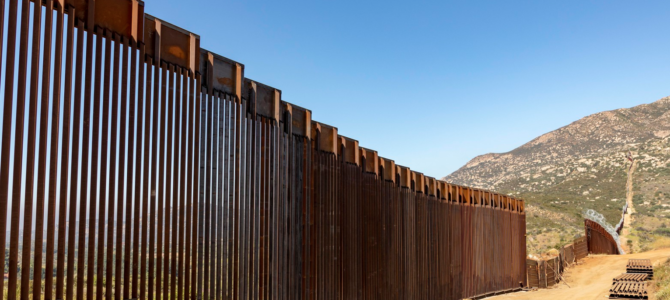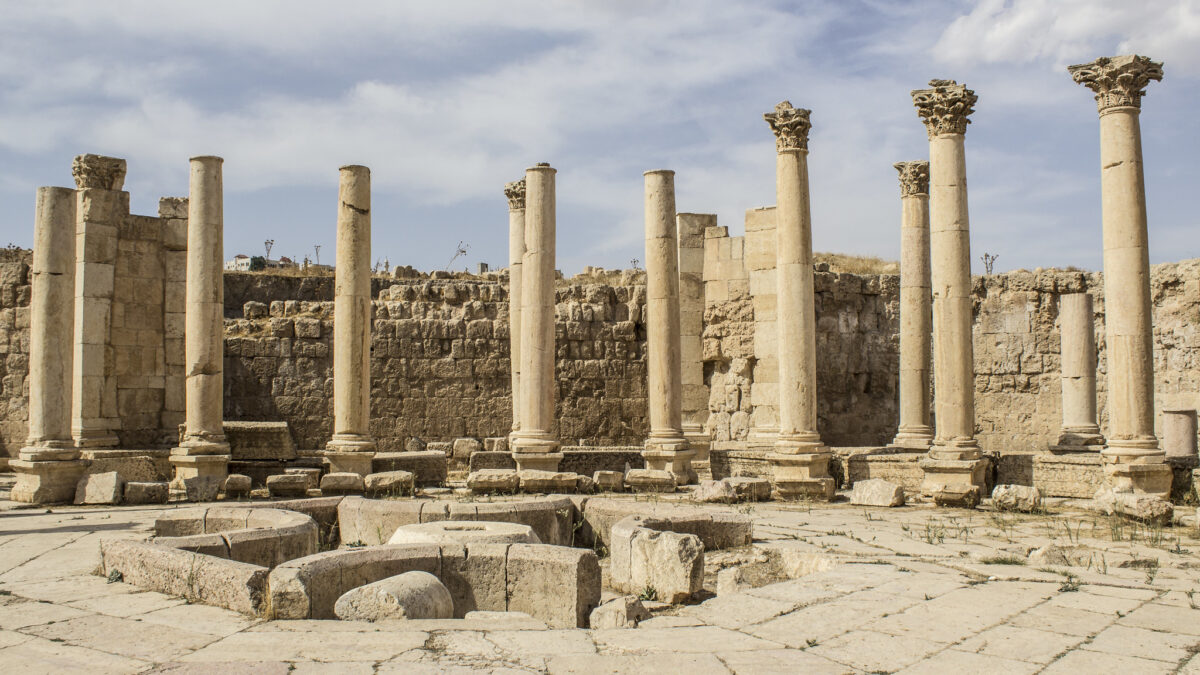
McALLEN, Texas — As Washington, D.C., was navigating impeachment drama on a recent Tuesday, giant diggers along the Rio Grande were moving around mountains of dirt, continuing to add new sections to a wall along the southern border.
Several of us stood watching in the gusty south Texas wind as the cement was poured and looming steel bollards were snapped into place. The new construction was creeping slowly toward its older counterpart, the section of wall built following the passage of the Secure Fence Act in 2006.
Influx Affects American Landowners Near the Border
As I chatted with the Border Patrol agents responsible for overseeing construction, a group of Rio Grande Valley landowners joined us — farmers, ranchers, and water district managers whose land the wall’s construction would affect. Outfitted in work clothes, cowboy hats, and boots, they are life-long residents of the Rio Grande Valley. Nearly all of them have followed their fathers into generational farming and ranching. Ruperto Escobar, from Starr County, is still farming the same 75 acres his ancestors acquired when they arrived from Spain in 1767.
They are just some of the U.S. citizens our country is struggling to protect. They live and work along the Rio Grande, dealing with illegal crossers trampling their crops, cartels running active smuggling operations directly through their property, and diseased Mexican cattle wandering across the border and prompting repeated ranch quarantines.
They routinely deal with incursions from Border Patrol officers, and for some, their land is now home to giant aerostats. These giant, blimp-like surveillance tools have diminished but not eliminated the criminal activities. Othal Brand, head of the Hidalgo County Water Improvement District 3, describes the “splash downs” that occur with some regularity: An SUV, cleared of all seats except one, is packed full of drugs and driven at bracingly high speeds directly through their farms and into the river. Swimmers from the Mexican side of the bank immediately fan out, collecting the drug parcels and ferrying them to land as the car sinks to the bottom of the Rio Grande.
The Environmental Protection Agency requires Border Patrol to remove these cars from the river. They recently removed five.
These landowners largely view the border wall with the same grudging acceptance that is the hallmark of living along a border the U.S. government has not secured. They make compromises to accommodate a wall that, in some cases, will split their farms in two. They grumble about having to look at a giant steel wall 20 feet from their front doors, but accept it as a necessity to manage the untenable flow of human crossers and the escalating, unmanageable brutality.
Border Patrol Tries to Do Its Job Despite Criticism
Their stories are smaller parts of the larger one unspooling on the southern border, one marked by brutal violence, human suffering, and imperfect solutions. Often untold are the stories of the Americans in the middle, where the mundane aspects of living are overrun by rampant criminality, desperation, and a system that is strained, often past the point of breaking.
But when the system breaks, which it inevitably does, the Border Patrol must not. Instead, you find them doing their best to organize and care for massive surges of humanity without adequate facilities or resources, demonized by mainstream press, and dragged to the center of the national drama that swirls around our immigration policies.
The job of a U.S. Customs and Border Protection officer is equal parts rote and high drama. At the Hidalgo Port of Entry, officers process more than 10 million passenger and pedestrian entries per year, facilitating the flow of nearly $740 billion in commerce between Mexico and the United States.
On top of this, unaccompanied minors and adults cross the bridge, seeking asylum. They are often processed onsite, awaiting interviews and assessments in waiting rooms that can get crowded when the flow of people overwhelms the relatively small areas.
The day I was there, a dozen or so migrants were sitting in chairs, waiting to be processed. A movie played on the big-screen TV. Usually, these waiting areas are enough to handle the day-to-day influx, but the station also has holding cells for high-risk individuals, which, when the front room fills up, are turned into overflow waiting areas.
These are the holding cells that leaped into prominence when Rep. Alexandria Ocasio-Cortez, D-N.Y., famously accused Border Patrol in El Paso of forcing detainees to drink water out of a toilet. Each cell is indeed fitted with a toilet, which has a drinking fountain on the back. The two are serviced by separate potable water intakes, so no one is actually drinking toilet water. But the point is moot because at Hidalgo, one of the busiest ports of entry in the country, massive canisters of drinking water are available for anyone who is thirsty.
The frustration is palpable among the Border Patrol when they are asked about accusations that they do not care for migrants. To the contrary, I am told as we walk to their overstuffed pantry, they have clothing, baby bottles, diapers, Pedialyte, a multitude of snacks, car seats, and even medical officers onsite to perform evaluations. This, even though they were not allowed until recently to purchase these supplies on their government credit cards.
Border Facilities Can’t Handle the Vast Flow of Migrants
The way things are supposed to work, however, is not often how they do. That was the case this summer, when “the men and women in green” — the Border Patrol arm of U.S. Border Protection, who deal with the illegal crossers who do not present themselves at points of entry — were on the front lines of an unprecedented flow of migrants.
During the first eight months of 2019, the Rio Grande Valley had the highest volume of southwest border crossings with 223,000 apprehensions, a 124 percent increase compared to that same time in 2018. By the end of fiscal year 2019, the Rio Grande Valley Sector had made 340,000 apprehensions and still had only 3,000 agents.
The facilities, like their manpower, were far from equipped to handle the masses of people being forced into their care. No U.S. Border Patrol station is designed to hold more than 1,000 crossers. In McAllen, at the heart of the Rio Grande Valley, the station can hold 382 people. At one point during the chaos of the surge, the Rio Grande Valley Border Patrol had 9,000 migrants in custody.
As Congress responded with bickering and finger-pointing, more than 500 volunteers from throughout the Department of Homeland Security headed to the border to help their beleaguered colleagues. They made thousands of bologna sandwiches, facilitated delivery of hot meals, set up tents, and hooked up air conditioners. Border Patrol agents equipped with Toughbooks wandered in and out of the crowds, attempting to process individuals and families themselves, since every station was over capacity.
Many Illegal Crossing Stories Are Horrendous
As we stand under a bridge, not far from the river, in a site that housed the surge of illegal crossers last summer, the stories pour forth. Border Patrol agents talk about the smugglers who ferry migrants across, drop them at the bank, then turn around to pick up the next group. In one day, they can make five to seven trips.
They tell us about the stash houses these smugglers run, dirty and foul smelling, packed with males waiting to make the trip. For women, the sexual abuse is less a risk than a grim reality. Smugglers or fellow migrants routinely rape and abuse women, passing them around at stash houses, or leaving them to die in the dirt.
It is a horrific element of our illegal immigration problem, one that receives a shocking degree of silence from media and policymakers. But in the age of Me Too, the destitute and desperate women at the border, whose lives and bodies are ripped apart by the smugglers who reap billions from our failing border system, apparently do not make convenient victims.
The agents go on. They speak of abandoned children with phone numbers for U.S. relatives written on their shoes, and smugglers who try to build up the river with sandbags and attempt to drive across. Human misery and brutality, one anecdote at a time.
‘We Have Policy Crises’
Illegal crossings have dropped off as of late, as the Trump administration implements “Remain in Mexico” policies, which require asylum-seekers to wait for their adjudication across the border, and weed out fraudulent families with DNA tests. McAllen’s Border Patrol Division Chief Lloyd Easterling calls it a “game changer.” “We don’t have humanitarian crises,” he adds. “We have policy crises.”
To that end, the constant thread of the day emerges: Congress’ failure to address anything related to border security — commonsense policy, funding, additional beds, more agents — leaves the landowners, law enforcement, and migrants at the mercy of frayed solutions pieced together by people struggling to scrape by, uphold the law, protect their rights, and be merciful, all without the help of a Congress whose apathy is as glaring as the mid-day Texas sun.









